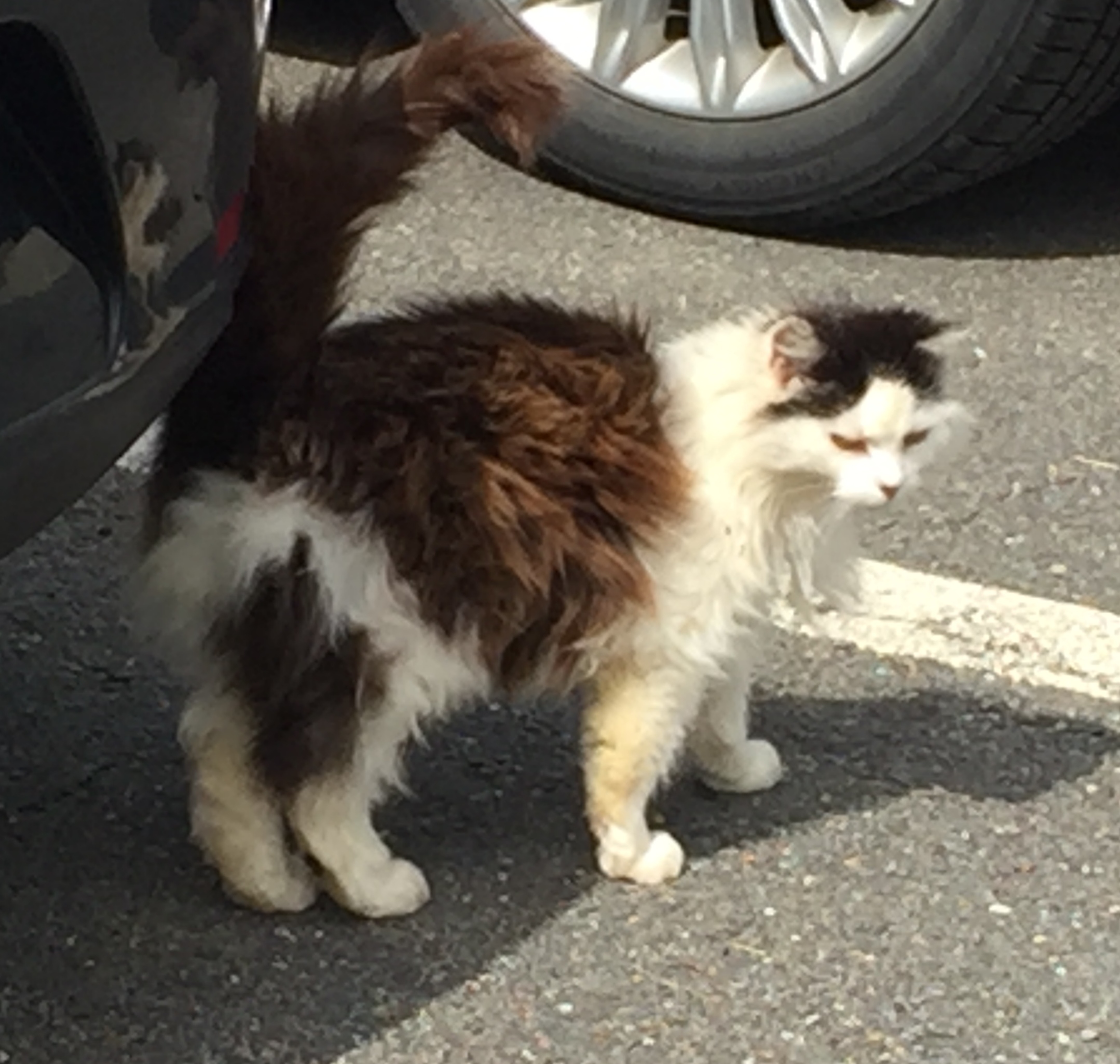What to Do When You See a Feral Cat

Feral cats, community cats, wild cats, stray cats — we have many names for the mysterious felines we sometimes see peeking out from under our porch, darting into abandoned buildings, or slithering into a sewer drain. Yet most of them share a single destiny: short, difficult lives.
Fortunately, helping feral or abandoned cats isn’t difficult. But it’s important that you do something and not just turn the other way.
A female cat can become pregnant as young as 16 weeks of age and go on to have two or three litters a year, so the feral cat population — and the problems associated with it — grows and perpetuates. In just a couple of years a single female cat and her kittens can produce dozens of cats.

You’ve spotted a cat running down your block. Now what? You want to help, but what can you do?
The first rule of helping stray cats: hands off!
Don’t go chasing after him right then and there. It’s unlikely you’ll catch him but it is likely that you’ll frighten him. Even if you do manage to get close enough, you’ll be risking serious injury if you attempt to grab him. A scared cat can inflict a lot of damage very quickly.
The second rule of helping stray cats: play detective.
Is this a pet cat who was recently lost? A stray cat who has been on his own for a time but warms up to people once he gets to know them? Is he a neighbor’s cat who goes in and out? A feral cat who by nature is wary of people and prefers living outside a traditional home? Look for an ear-tip on the left ear to signify to humane trappers and the public that this cat has already been altered and likely being cared for as part of a feral colony.
To find out, ask neighbors and other people in the immediate area if they know anything about the cat. Did he just arrive or has he been seen around for some time? Is anyone feeding him, providing shelter or even letting him in their house? Does he have a collar and tags? Has anyone posted “lost cat” signs?
Contact the local animal shelter to see if he has been reported lost.

How to help a friendly cat
If it turns out kitty is lost, then of course you’ll want to contact his owner and return him. If he’s a friendly stray, then probably he lived in a home at one time and might be adoptable. Ask for assistance from HSLC (email helpanimals@humaneloudoun.org) or someone experienced in handling cats.
Caring for feral cats
If your neighborhood cat is feral, or it doesn’t seem like he’s ever lived in a home, then he likely isn’t adoptable, but he can stay outdoors while you provide food and shelter.
But the most important rule for caring for feral cats: fix them, fast.
HSLC has a Community Cat Program and employs a policy called Trap, Neuter, Return (TNR) to help maintain the number and health of current populations of Community Cat colonies. By using a system of humane trapping, HSLC volunteers will trap the cats, transport them to local vets to be altered (spayed or neutered), get a rabies vaccination, microchip, ear-tip and address any immediate medical needs as applicable. Cats are then returned to their home/colony after a short period of recovery.
The HSLC Community Cats (feral) program is funded by donations from our community. The program is free to the public because HSLC does not want anyone to be afraid to ask for help due to financial considerations.
Click here for more information and to submit a request for TNR assistance.
https://humaneloudoun.org/what-we-do/community-cat-program/
When you find kittens
Kittens should stay with Mom until they are 6 – 8 weeks old and eating solid food. When you find kittens be absolutely sure the mom is no longer caring for them before you remove them. Mom may be hunting for food or still be nearby. Contact HSLC for information and help.
If you are not located in the Loudoun County, Virginia area, check with local rescues about TNR programs or contact Ally Cat Allies https://www.alleycat.org/
If there’s one feral cat living in your neighborhood, it’s very likely others are there too. Take a look around, and talk with your neighbors about how you can all work together to help them.
